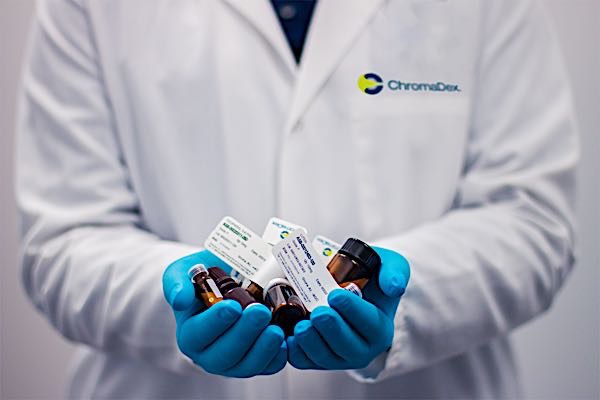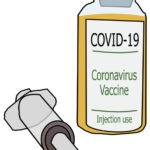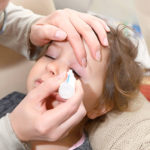Penicillin Allergy: Less Common Than It Seems
Penicillin allergy is one of the more commonly reported medication allergies, affecting up to 10% of all patients and 15% of hospitalized patients. But, many such individuals may not actually be allergic, as some individuals lose sensitivity as they age. Fortunately, there is a way to learn whether you have lost your penicillin sensitivity and can be de-labelled as penicillin-allergic.
“Penicillin” actually refers to a group of antibiotics that are used to treat bacterial infections (including sinus, ear, respiratory, skin, and more). Penicillin antibiotics are a subgroup of a larger class of beta-lactam antibiotics. Beta-lactam antibiotics in general are used to eliminate different types of infectious bacteria. There are several types of allergy to penicillin and these vary by severity and onset of the reaction; the most common are immediate versus delayed reactions.
Immediate Hypersensitivity
Immediate hypersensitivity to penicillin drugs is due to the interaction of penicillin-specific IgE antibodies (allergy antibodies) with mast cells (immune-sensitized cells in the nose, eyes, chest, lungs, and more). Naturally, penicillin in its whole form is not very allergenic, but when in the body, it can spontaneously break down and create more allergenic intermediates. These intermediates, called major and minor determinants, can induce the formation of specific IgE antibodies, which then bind to mast cells and basophils in a process known as sensitization. Sensitization itself is usually asymptomatic. But, with re-exposure to penicillin after this sensitization, the IgE antibodies on mast cells and basophils will trigger an immune response when bound to penicillin allergens. The allergic response is based on the release of histamine, leukotrienes, and other common inflammatory chemicals, from the mast cells.
Symptoms of an immediate immune response typically begin within one hour of exposure to the drug. These symptoms can be severe, including:
- Itching (pruritus) or hives (urticaria)
- Swelling of the larynx in the respiratory pathway (laryngeal edema)
- Tightening of muscles in lungs (bronchospasm)
- Significant drop in blood pressure (hypovolemic shock or hypotension)
- Wheezing or coughing
- Nasal congestion
- Deep swelling in various body parts (angioedema)
- Nausea/vomiting/diarrhea
- Feeling dizzy or light-headed
- Irregular heartbeat
A more severe or potentially life-threatening reaction is anaphylaxis, which can cause any of the above symptoms, often with low blood pressure.
Risk factors contributing to potential immediate allergy to penicillin include: age (20-49 y/o), frequent intermittent exposure to penicillin, parenteral administration (injection of penicillin directly into the bloodstream or muscle), having multiple antibiotic allergy syndrome (allergic reactions to multiple classes of antibiotics), being closely related to another individual with antibiotic allergies, and having other allergies in general.
Delayed Hypersensitivity
Delayed hypersensitivity to penicillin is very different from immediate hypersensitivity. Symptoms of delayed hypersensitivity occur after multiple doses, for example after being on penicillin treatment for several days. In addition, the mechanism of reaction is different from that of immediate hypersensitivity; these reactions are not IgE-mediated but instead can occur through several different mechanisms. Usually these reactions are not life-threatening.
Delayed hypersensitivity symptoms can also include:
- Itching (pruritus) or hives (urticaria)
- Swelling around the body (angioedema)
- Rashes (erythematous macules/papules)
Why Should You Get Tested?
Being able to use penicillin for a bacterial infection is very beneficial. Penicillin is itself inexpensive and often effective in the case of non-penicillin resistant bacteria; penicillin alternatives have been associated with increased healthcare cost and longer hospital stays.
Testing Procedures
Testing and evaluating a true penicillin allergy begins with taking a clinical history and, if suspicious about an allergic reaction, performing skin tests. If the skin test is positive for penicillin, then avoidance or desensitization of penicillin is recommended. If the skin test is negative even with a suspected positive history, an oral challenge is used to ensure that penicillin can in fact be tolerated by the patient.
Penicillin is actually one of the few drugs that has accurate and predictive skin tests available. A skin test works by detecting the presence (or lack of) IgE antibodies in response to the specific allergen that is introduced to the skin. Allergen-specific IgEs will be present on skin mast cells in an individual who is currently penicillin allergic. A skin test positive to penicillin will reflect a local allergic immune response by resulting in small red bumps or hives. From here, treatment will include use of a non-penicillin antibiotic or a penicillin desensitization regimen can be discussed if there are no alternatives to penicillin.
Skin tests are usually performed either as prick tests or intradermal tests. A prick test exposes the patient’s skin to a small amount of allergen using a small prick to the skin. If the test is positive, hives will form at the site of exposure and will vary in size depending on the patient’s sensitivity to the allergen. For a complete evaluation, minor and major determinants of penicillin allergy should be included in the testing. It has been shown that using only the major determinant (PPL) in the skin test can be less accurate than using a combination of minor and major determinants. Intradermal tests are much more sensitive and are conducted using a very small injection in the patient’s upper arm; these are used if prick tests are negative. These tests usually take about one hour. Antihistamines should be avoided for 3 days prior, because these can interfere with the skin test results. A common and beneficial place to get tested is at an allergist’s practice. Interpretation and evaluation of skin testing should be done by an allergy specialist.
Although both skin testing and blood testing have diagnostic challenges, skin testing is still more accurate than blood testing and thus the preferred option. In addition, commercial blood testing does not include all relevant allergic penicillin determinants and a negative blood test can be misleading.
Another important component of evaluation of penicillin allergies is the time between testing and occurrence of last allergic reaction. Penicillin-specific IgEs decrease over time, meaning that individuals with more recent reactions will likely be more allergic than those with more distant reactions. Additionally, a good time to conduct this testing is when the patient is currently well and not in need of urgent penicillin treatment. Skin testing is rapid, cost-effective, and safe.
Desensitizations
Desensitization therapy is used to temporarily induce tolerance to the allergen, in this case penicillin. Desensitization can be important for patients who require the use of a specific medicine to which they had a prior reaction. This process induces tolerance by taking a small amount of allergic drug gradually, using a series of dilutions, starting at very low concentrations and building tolerance by progressively increasing the dosage at specified time intervals. The procedure is completed under clinical supervision in an allergist’s office, with blood pressure, pulse oximetry, and breathing monitored. The oral route is preferred as it is generally considered safer than injection directly into the bloodstream.
Treatment using alternative drugs in individuals with penicillin allergy
Cephalosporins are antibiotics within the beta-lactam class (like penicillin) that share many similarities with penicillin. Although rates of cross-reactive reactions of cephalosporins with penicillin are low, especially with the newer generations of cephalosporins, cephalosporin reactions still occur and can be severe. Therefore, cephalosporin antibiotics should only be used in penicillin allergic individuals after careful risk assessment. Skin testing for cephalosporins has been explored, but is usually not as well-validated as skin testing for penicillin.
On the other hand, monobactams are beta-lactam antibiotics as well and are also structurally similar to penicillin, but do not show significant cross reactivity with penicillin, allowing monobactams (i.e. aztreonam, ceftazidime) to be given to patients who have penicillin allergy.
Recent
Popular





























